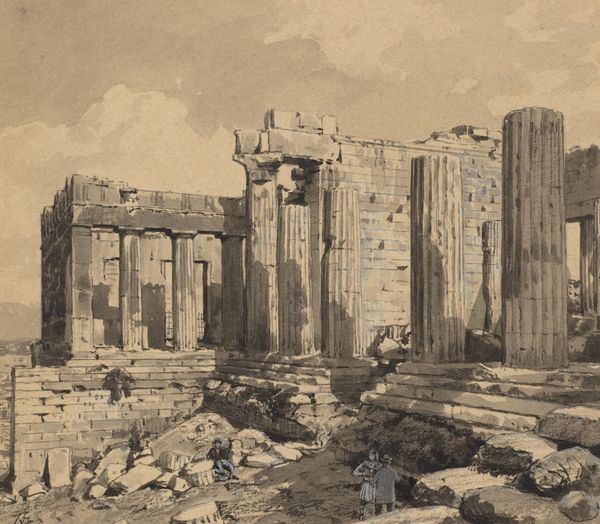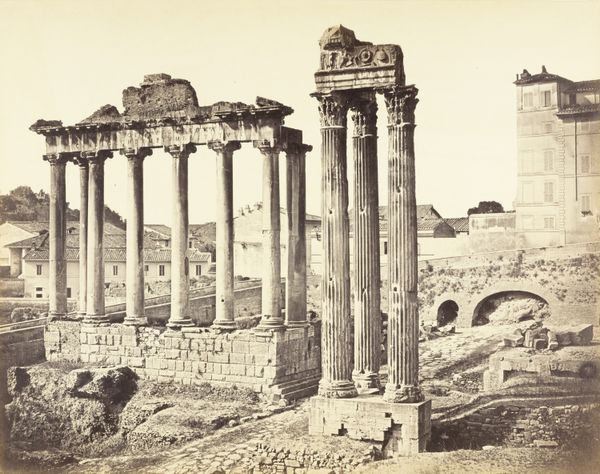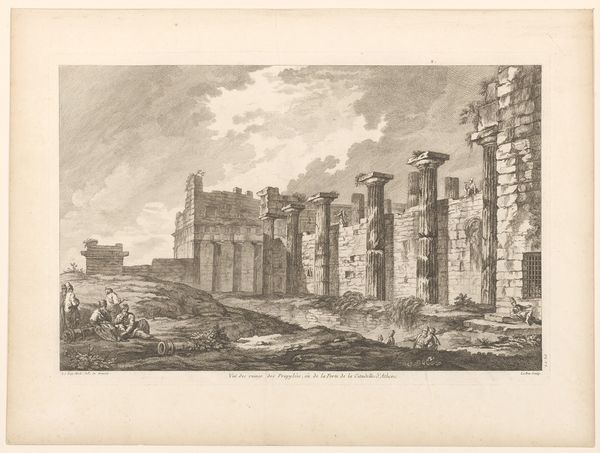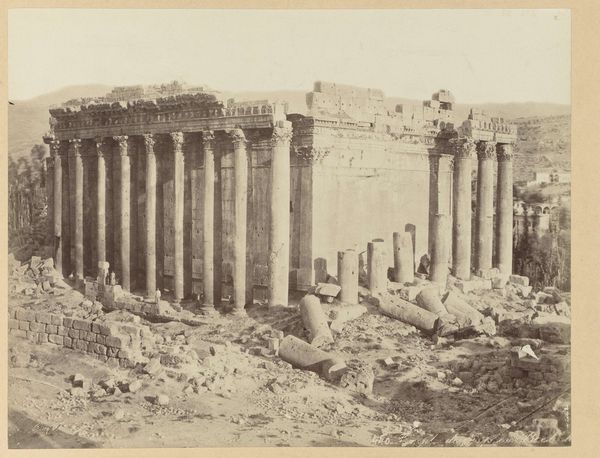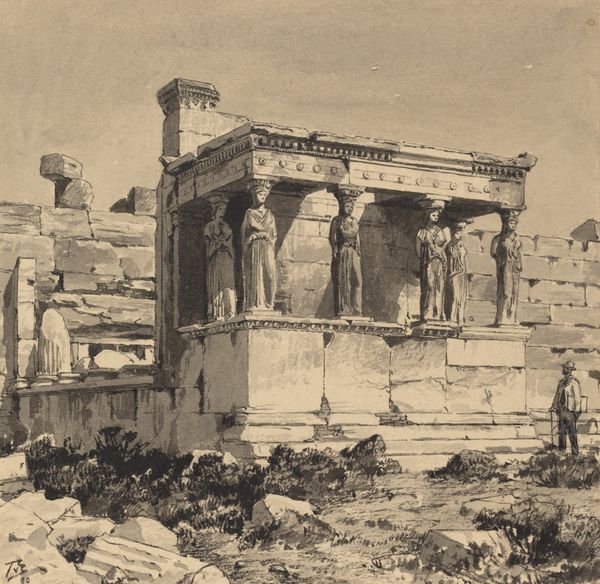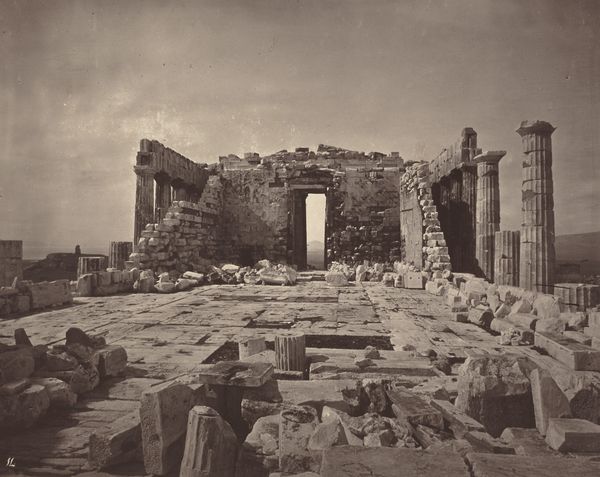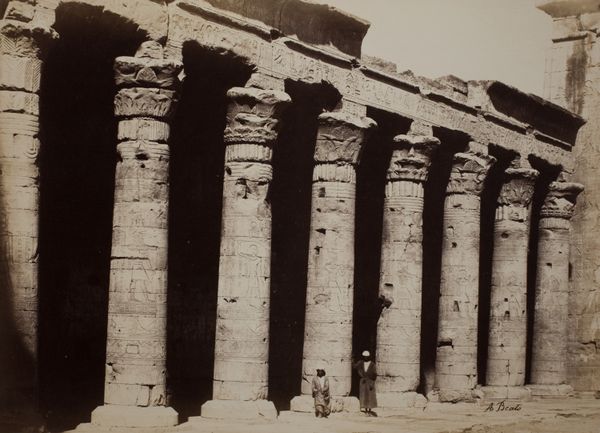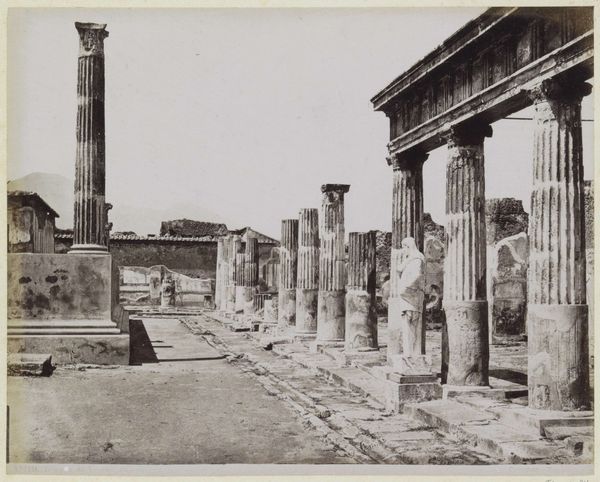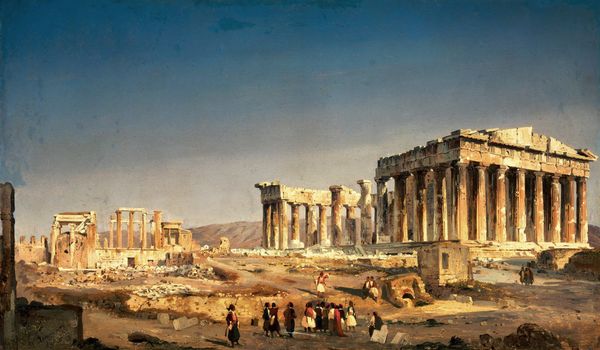
drawing
#
scripture like structure
#
drawing
#
amateur sketch
#
aged paper
#
sketch book
#
charcoal drawing
#
old-timey
#
19th century
#
heavy shading
#
historical font
#
columned text
Dimensions: Overall: 11.9 x 16.2 cm (4 11/16 x 6 3/8 in.) support: 48.8 x 33.7 cm (19 3/16 x 13 1/4 in.)
Copyright: National Gallery of Art: CC0 1.0
Editor: This is The Propylaeum from the East, a drawing from 1890 by Themistocles von Eckenbrecher. It's quite stark, and evokes a sense of loss, depicting the ruins with heavy shading. What can you tell me about it? Curator: This drawing presents us with an intriguing interplay between the grandeur of classical architecture and the reality of its decay. It was produced during a period of intense European interest in, and appropriation of, classical antiquity. Think about the power dynamics at play when a European artist depicts the remnants of Greek civilization. Who is this art for, and what narratives does it reinforce? Editor: That’s interesting. I hadn’t considered that angle. It does seem like it romanticizes the ruins, almost like a trophy. Curator: Precisely. Consider how the ruins themselves become symbols, laden with cultural and political significance. What does it mean to depict a powerful civilization in such a state? What ideas about Western civilization's own trajectory are implied? And how does the absence of people factor into this narrative? Editor: It feels like a statement about time, power, and maybe even the perceived superiority of the viewer's culture. So it's not just a simple landscape. Curator: Exactly. This work operates within a larger framework of orientalism and colonial gaze that shaped European art of the period. The drawing allows us to analyze the West's relationship to the Rest and the way it perceives its own cultural heritage through the lens of power. Editor: I see it differently now, it feels like it's encouraging a discussion about how the West perceived and presented other cultures to its public during that period. Curator: Indeed. Examining art like this provides a window into understanding how historical and political forces shape artistic expression and our perceptions of it.
Comments
No comments
Be the first to comment and join the conversation on the ultimate creative platform.

